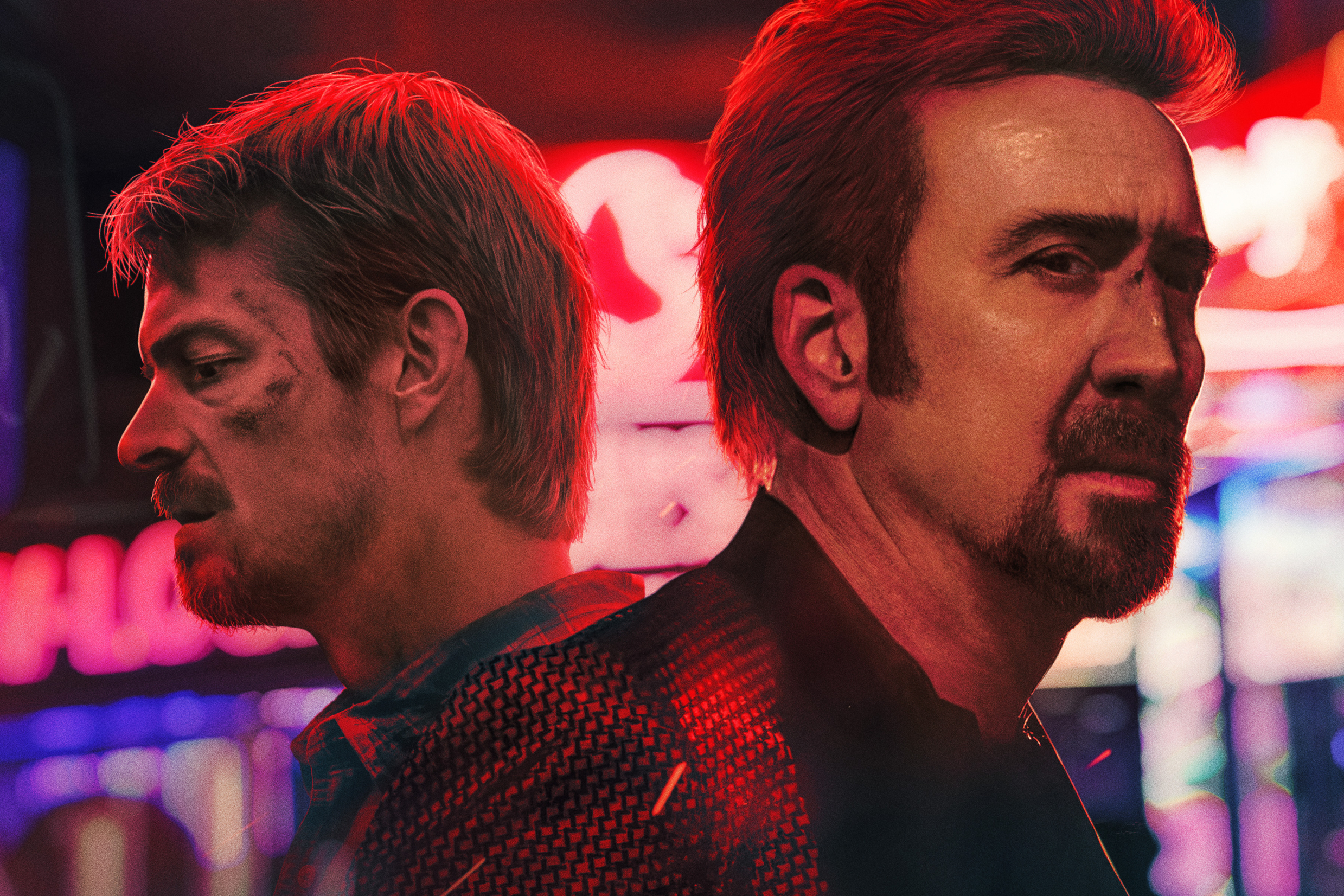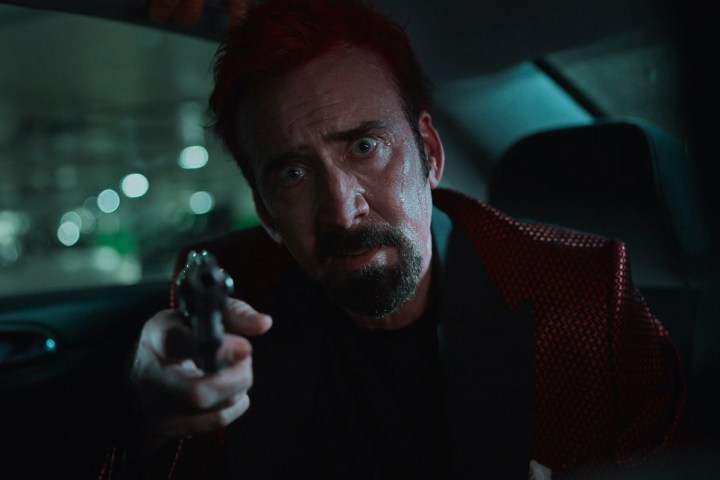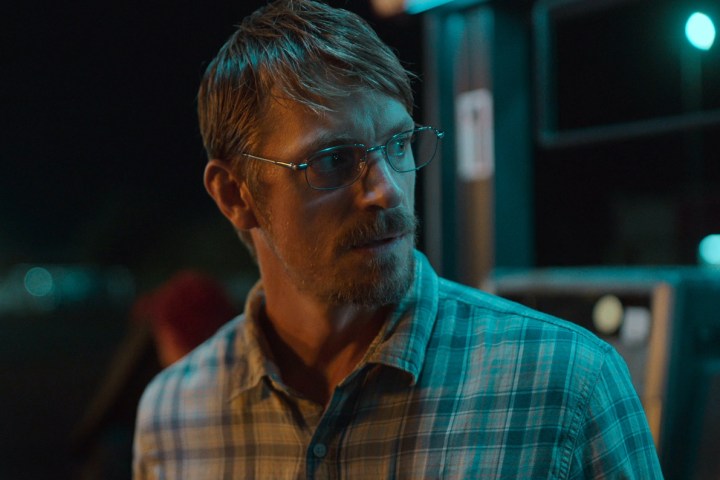[ad_1]

“Nicolas Cage gives a mesmerizingly over-the-top performance in Sympathy for the Devil, an entertaining but ultimately forgettable thriller.”
Pros
- Nicolas Cage’s unhinged central performance
- Joel Kinnaman’s layered, straight-faced lead turn
- A few intense and engaging sequences throughout
Cons
- A predictable third-act twist
- A climactic action sequence that goes on too long
- A screenplay that fails to match its star’s manic energy
A kooky, coked-up riff on Michael Mann’s Collateral, Sympathy for the Devil is exactly the movie that it wants to be. The best compliment one can pay is it is that there’s never any doubt at any point throughout the film’s thankfully lean 90-minute runtime that it knows exactly what it is. The Yuval Adler-directed, Nicolas Cage-led B-movie operates with such a clear sense of purpose that it’s easy to give into its steady rhythm, sit back, and go along for the ride.
Unfortunately, Sympathy for the Devil never goes anywhere particularly original or satisfying. It purposefully spins its wheels for its first hour, relying on the same predictable but engaging cycle of violence and frustration, only to eventually culminate in a final act that’s less surprising than it should be and more incoherent than it needs to be. The film is, consequently, little more than a predictable, drawn-out cinematic detour; one that’s loosely held together by Cage’s manic, swing-for-the-fences performance and Joel Kinnaman’s commendably straight-faced turn opposite him.

Written by Luke Paradise, Sympathy for the Devil begins in the outer limits of Las Vegas, a region it’ll go on to occupy for the majority of its runtime. There, viewers meet The Driver (Kinnaman), a seemingly straight-laced husband on the way to the hospital where his wife is in the midst of giving birth to their new baby. The Driver’s plans are disrupted, however, when he reaches the hospital only to find himself held up at gunpoint by The Passenger (Cage), a red-haired, alcoholic gunman intent on making his new hostage’s life as difficult as possible.
From the second he shows up on-screen, Cage’s gun-wielding loose cannon is the ultimate Passenger From Hell. Not only is his latest, unnamed character the kind to wave a gun in another person’s face with wanton abandon, but he’s also just as quick to quote ominous Bible verses, purposefully piss off a police officer, and take over an entire roadside diner if it pleases him. Cage, likewise, doesn’t just lean into the character’s insanity, but he plays it all the way up — turning in a performance that is alternately irritating, hilarious, and disarming, but always uniquely terrifying.
For most of their journey together, it’s unclear exactly why Cage’s Passenger chose Kinnaman’s Driver as the target for all of his unbridled rage and psychological attacks. Paradise’s script includes a handful of early clues and hints, however, all of which suggest that there may be an actual history between Sympathy for the Devil’s two leads. By the time the film has unveiled the full explanation for its central hostage situation, though, whatever mystery was there has already been long dispelled. Rather than delivering its ultimate reveal in one concise blast of information, the movie also makes the mistake of dragging out its various narrative twists far longer than it actually should.

While Sympathy for the Devil fails to make much of a narrative mark, it does a better job of entertaining you in the moment and drawing out tension from its core relationship. As unlikely as they may seem together, Kinnaman and Cage prove to be a formidable on-screen duo. The former brings palpable emotional desperation to his turn, allowing himself to emerge as a grounded counter to Cage, whose performance doesn’t so much verge on over-the-top as it does fully and completely embrace its own violently cartoonish grandiosity.
The film mines plenty of comedy and intensity out of Kinnaman and Cage’s scenes together, and nowhere does it do that more expertly than in the diner-set sequence that caps off its second act. The scene in question starts off on an uneasy note and gets progressively more intense and unusual from there, marking the moment when Sympathy for the Devil’s dark sense of humor and violent edge combine most effectively. Everything that comes after isn’t as successful, but it’s a testament to how well-edited, performed, and staged the sequence is that it manages to remain as engaging as long as it does.
If all of this sounds like light praise for Sympathy for the Devil, that has more to do with how slight and inconsequential the film is than the quality of its best parts. The movie is little more than a quietly effective exercise in on-screen tension and violence, one that is hampered by the unfortunate fact that its various ideas, both stylistic and thematic, have already been explored more deeply and compellingly by other films and filmmakers. It’s an entertaining, low-commitment way to spend 90 minutes, but it inspires actual sympathy for its characters no more effectively than it does indifference.
Sympathy for the Devil hits theaters on Friday, July 28.
Editors’ Recommendations
[ad_2]









